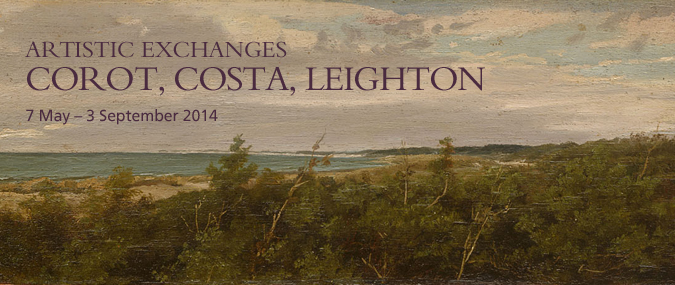Discover how encounters in cosmopolitan Rome shaped European artists' approaches to nature.
For centuries, painters from north of the Alps travelled to the countryside around Rome, lured by its beauty, harmonious proportions and unique light. They constituted a dynamic international community, which provided an ideal platform for artistic exchange across national boundaries.
Lacking a tradition of landscape painting in his own country, the Roman painter Giovanni (Nino) Costa (1826–1903) looked to this group of cosmopolitan artists for inspiration and followed, in particular, the poetic approach to nature pioneered by Jean-Baptiste-Camille Corot (1796–1875). Costa favoured a long horizontal format for his paintings and, like Corot, prioritised the rendering of atmosphere over realistic detail.
When Costa met Frederic, Lord Leighton (1830–96) in Rome in 1853, he stimulated the Victorian figure painter's interest in studying nature, passing on the lessons he had learned from Corot's followers. Inspired by his Italian friend, Leighton started to make landscape oil sketches, primarily for personal pleasure. Based in Paris during the second half of the 1850s, Leighton had the opportunity to familiarise himself with Corot's work. Testament to Leighton's appreciation of the French master was his purchase, in 1865, of Corot's decorative cycle 'The Four Times of Day', making him one of the first collectors of Corot in Britain.
The landscape sketches and paintings on display here, mainly by Corot, Costa and Leighton, reveal the profound connections among these painters and show all three contributing to a tradition of artists studying nature in Italy.

